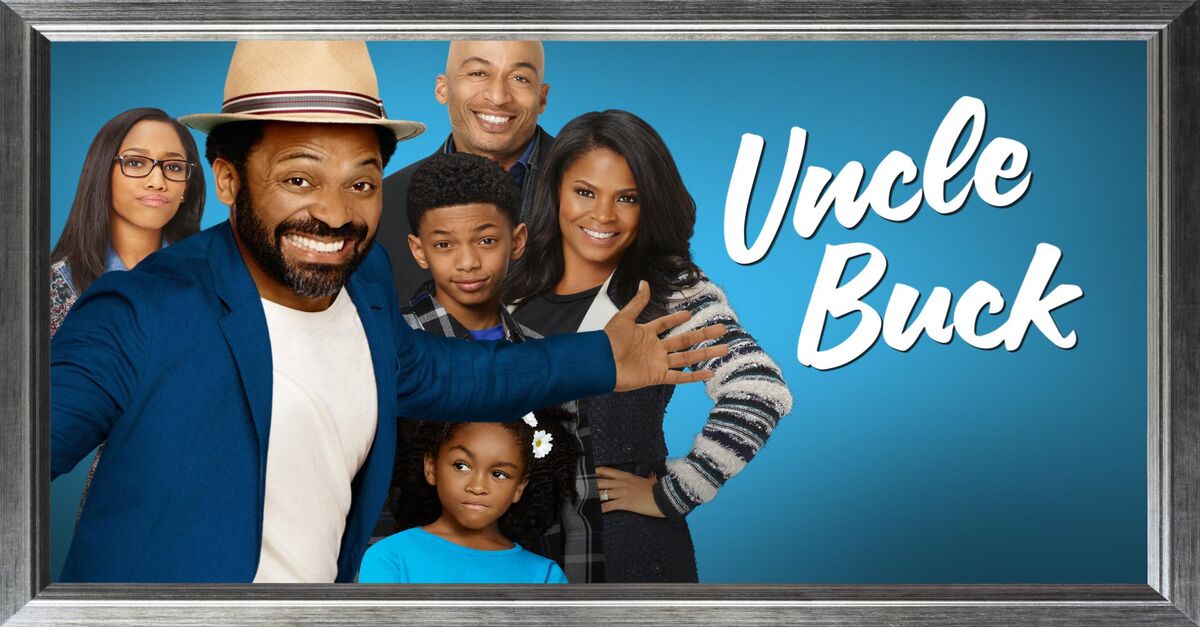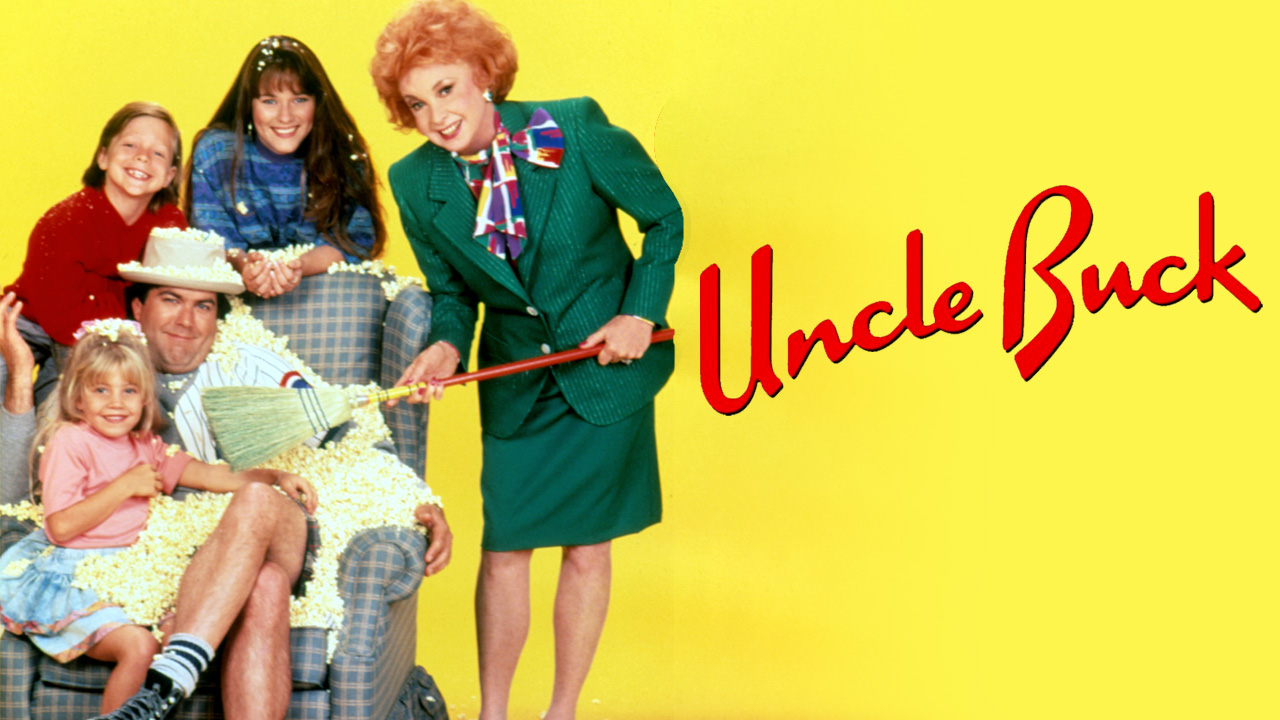Character Analysis

Uncle Buck, the titular character of the television series, is a complex and endearing figure who evolves throughout the show. His initial portrayal as a carefree, irresponsible, and somewhat selfish individual gradually transforms into a more mature and responsible character, driven by a deep love for his family.
Uncle Buck’s Character Development, Uncle buck tv show
The show explores Uncle Buck’s journey of personal growth as he learns to navigate the challenges of adulthood and family life. Initially, he struggles with his responsibilities, often making impulsive decisions and relying on his charm to get him out of trouble. However, as he spends more time with the family, he begins to understand the importance of commitment and stability. He learns to take his role as a guardian seriously, providing support and guidance to his nieces and nephews while simultaneously confronting his own shortcomings.
Uncle Buck’s Relationships with the Family
Uncle Buck’s relationships with the family members are a significant aspect of the show’s narrative. His bond with his brother, Bob, is a complex mix of love, frustration, and a shared history. Their relationship is marked by their contrasting personalities and life choices, but they ultimately rely on each other for support.
- Buck’s relationship with his nieces and nephews, particularly Tia and Miles, is particularly heartwarming. He forms a unique bond with each child, offering them a sense of adventure and unconventional wisdom.
- His interactions with his sister-in-law, Cindy, are often humorous and filled with playful banter. While initially wary of Buck’s presence, Cindy eventually comes to appreciate his genuine love for the family.
Uncle Buck’s Character Compared to Other Television Characters
Uncle Buck’s character can be compared to other iconic television figures like Uncle Phil from “The Fresh Prince of Bel-Air” and Frank Costanza from “Seinfeld.” While all three characters share a similar archetype of the unconventional and lovable uncle, they differ in their motivations and approaches to family life.
- Uncle Phil, like Buck, is a figure of authority and wisdom, but he embodies a more traditional and disciplined approach to parenting.
- Frank Costanza, on the other hand, represents a more chaotic and eccentric side of family life, often causing chaos and mayhem in his pursuit of his own unique brand of logic.
Uncle Buck’s Comedic Timing
Uncle Buck’s comedic timing is a crucial element of the show’s humor. His dry wit, sarcastic remarks, and ability to deliver a punchline with a deadpan expression create a unique brand of comedy that is both endearing and hilarious. He often finds humor in the everyday situations of family life, making the show relatable and engaging for viewers.
Themes and Social Commentary

Uncle Buck, a heartwarming sitcom that ran from 1989 to 1991, delves into the complexities of family life, responsibility, and the journey of growing up. While entertaining audiences with its comedic situations, the show also subtly addresses social issues and cultural trends prevalent during that era.
Family Dynamics and Responsibility
The show explores the intricate relationships within a blended family, highlighting the challenges and rewards of navigating familial bonds. Uncle Buck, a carefree and somewhat irresponsible bachelor, is thrust into the role of guardian to his niece and nephews after their parents face a personal crisis. This unexpected responsibility forces Buck to confront his own immaturity and learn the importance of commitment and care.
- Buck’s initial reluctance to take on the responsibility of raising his niece and nephews underscores the societal expectation that men should be independent and prioritize their own needs over those of others. However, as he gradually embraces his new role, the show challenges this stereotype and demonstrates the transformative power of familial love and obligation.
- The show also examines the dynamic between parents and children, showcasing the struggles of parenting and the challenges of raising teenagers in a rapidly changing world. The parents in the show grapple with balancing their own careers and personal lives with the needs of their children, highlighting the societal pressures faced by working parents during this period.
- The sibling relationships between Buck’s niece and nephews are realistically portrayed, showcasing the dynamics of rivalry, affection, and support that characterize sibling bonds. The show underscores the importance of sibling relationships in providing emotional stability and a sense of belonging, especially during times of familial upheaval.
Social Commentary and Cultural Trends
The show reflects the social and cultural trends of the late 1980s and early 1990s, touching upon issues like economic anxieties, the changing role of women, and the rise of technology.
- The economic anxieties of the time are reflected in the show’s portrayal of the family’s financial struggles. The parents’ career challenges and the constant need to make ends meet underscore the economic uncertainties faced by middle-class families during this period.
- The show also reflects the changing role of women in society, as Buck’s sister navigates her career aspirations while balancing her responsibilities as a mother. The show challenges traditional gender roles by depicting a woman who is both ambitious and nurturing, reflecting the growing movement for gender equality in the workplace.
- The show incorporates elements of technology, such as the use of personal computers and video games, which were becoming increasingly prevalent in American households during this era. The show’s portrayal of these technological advancements reflects the rapid pace of technological change and its impact on family life.
The Show’s Impact and Legacy: Uncle Buck Tv Show

“Uncle Buck” was a beloved television series that captured the hearts of audiences during its original run, leaving an enduring legacy that continues to resonate today. The show’s popularity stemmed from its relatable characters, heartwarming storylines, and comedic charm.
The Show’s Popularity and Cultural Impact During Its Original Run
“Uncle Buck” premiered in 1989 and quickly became a hit, achieving high ratings and earning critical acclaim. The show’s success can be attributed to its relatable characters, heartwarming storylines, and comedic charm. The show’s popularity was also fueled by its strong cast, particularly the charismatic performance of Kevin Meaney as the titular Uncle Buck. The show’s themes of family, responsibility, and finding humor in everyday life resonated with audiences of all ages.
Uncle buck tv show – Uncle Buck, the heartwarming sitcom, captured the essence of family dynamics with its relatable characters and humorous situations. The show’s soundtrack often featured classic rock anthems, and one particular episode featured a scene where the characters gathered around a record player, blasting the iconic riffs of van halen.
This nod to rock music highlighted the show’s ability to blend nostalgia with contemporary humor, resonating with viewers of all generations.
The “Uncle Buck” TV show, a modern take on the beloved 1989 film, aims to capture the same heartwarming chaos. While the original film starred John Candy, the series brings a fresh perspective, exploring the complexities of family dynamics. It’s interesting to consider how the show might resonate with audiences who appreciate the comedic styles of Joe Rogan and Adam Sandler , both known for their improvisational humor and relatable characters.
Ultimately, “Uncle Buck” seeks to build upon the original’s legacy by offering a contemporary take on family, responsibility, and the quirks of life.
